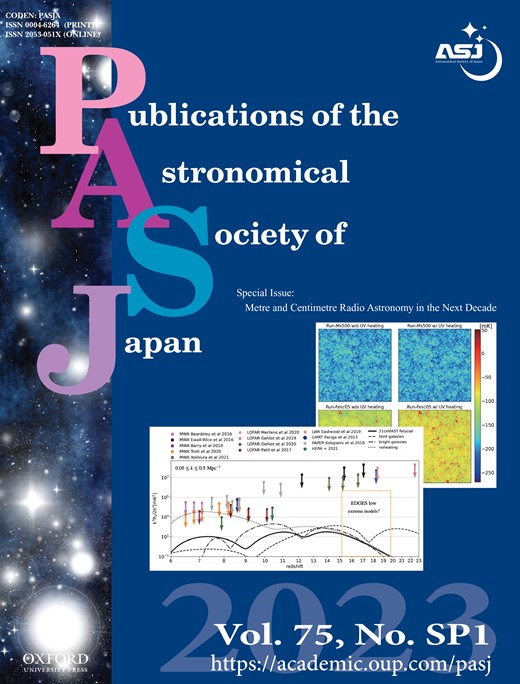-
Views
-
Cite
Cite
Pablo Villanueva-Domingo, Kiyotomo Ichiki, 21 cm forest constraints on primordial black holes, Publications of the Astronomical Society of Japan, Volume 75, Issue Supplement_1, February 2023, Pages S33–S49, https://doi.org/10.1093/pasj/psab119
Close - Share Icon Share
Abstract
Primordial black holes (PBHs) as part of the dark matter (DM) would modify the evolution of large-scale structures and the thermal history of the universe. Future 21 cm forest observations, sensitive to small scales and the thermal state of the intergalactic medium (IGM), could probe the existence of such PBHs. In this article, we show that the shot noise isocurvature mode on small scales induced by the presence of PBHs can enhance the amount of low-mass halos, or minihalos, and thus, the number of 21 cm absorption lines. However, if the mass of PBHs is as large as MPBH ≳ 10 |$M_\odot$|, with an abundant enough fraction of PBHs as DM, fPBH, the IGM heating due to accretion on to the PBHs counteracts the enhancement due to the isocurvature mode, reducing the number of absorption lines instead. The concurrence of both effects imprints distinctive signatures on the number of absorbers, allowing the abundance of PBHs to be bound. We compute the prospects for constraining PBHs with future 21 cm forest observations, finding achievable competitive upper limits on the abundance as low as fPBH ∼ 10−3 at MPBH = 100 |$M_\odot$|, or even lower at larger masses, in regions of the parameter space unexplored by current probes. The impact of astrophysical X-ray sources on the IGM temperature is also studied, which could potentially weaken the bounds.




